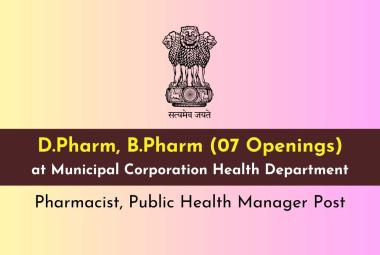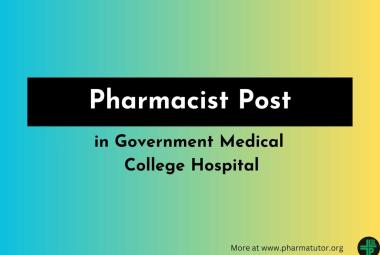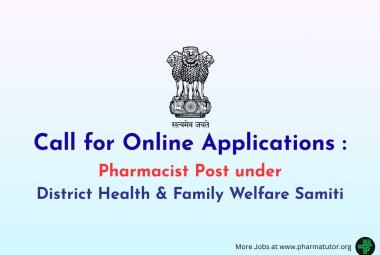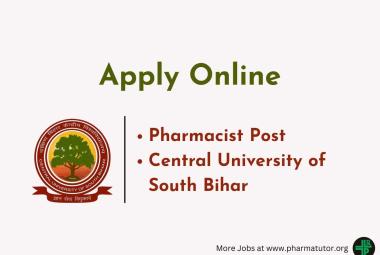About Author
Derle Nikita D
MVP College of Pharmacy,
Nashik, Maharashtra, India
nicks.patil@yahoo.com
The discovery of antimicrobial drugs (antibiotics) was one of the most significant medical achievements of the 20th century. The term antibiotics literally means "against life"; in this case, against microbes. There are many types of antibiotics--antibacterials, antivirals, antifungals, and antiparasitics. Some drugs are effective against many organisms; these are called broadspectrum antibiotics. Others are effective against just a few organisms and are called narrowspectrum antibiotics. The most commonly used antibiotics are antibacterials. There are several types of antimicrobials--antibacterials, antivirals, antifungals, and antiparasitic drugs. (Although antibacterials are often referred to by the general term antibiotics, we will use the more precise term.) Of course, antimicrobials aren’t magic bullets that can heal every disease. When used at the right time, they can cure many serious and life threatening illnesses.
[adsense:336x280:8701650588]
Antibacterials are specifically designed to treat bacterial infections. Billions of microscopic bacteria normally live on the skin, in the gut, and in our mouths and throats. Most are harmless to humans, but some are pathogenic (disease producing) and can cause infections in the ears, throat, skin, and other parts of the body. In the preantibiotic era of the early 1900s, people had no medicines against these common germs and as a result, human suffering was enormous. Even though the body’s diseasefighting immune system can often successfully fight off bacterial infections, sometimes the germs (microbes) are too strong and your child can get sick.With the discovery of Penicillin the dawning age of antibiotics made the world get rid of infectious diseases.
In the 1920s, British scientist Alexander Fleming was working in his laboratory at St. Mary’s Hospital in London when almost by accident, he discovered a naturally growing substance that could attack certain bacteria. Antibiotics are the most important tool for life combat threatening diseases.
A Look Back:-
Serious diseases that once killed thousands of youngsters each year have been almost eliminated in many parts of the world because of the widespread use of childhood vaccinations.
In much the same way, the discovery of antimicrobial drugs (antibiotics) was one of the most significant medical achievements of the 20th century. There are several types of antimicrobials—antibacterials, antivirals, antifungals, and antiparasitic drugs. (Although antibacterials are often referred to by the general term antibiotics, we will use the more precise term.) Of course, antimicrobials aren’t magic bullets that can heal every disease. When used at the right time, they can cure many serious and life threatening illnesses.
Antibacterials are specifically designed to treat bacterial infections. Billions of microscopic bacteria normally live on the skin, in the gut, and in our mouths and throats. Most are harmless to humans, but some are pathogenic (disease producing) and can cause infections in the ears, throat, skin, and other parts of the body. In the pre antibiotic era of the early 1900s, people had no medicines against these common germs and as a result, human suffering was enormous. Even though the body’s disease fighting immune system can often successfully fight off bacterial infections, sometimes the germs (microbes) are too strong and your child can get sick. For example,
-
Before antibiotics 90% of the children get dead because of meningitis and among those who survived had number of problems from illness to mental retardation.
-
Strep throat was at times a fatal disease and ear infections sometimes spread from ear to brain sometimes causing ear problems.
-
Other seriuous infections from tuberculosis to pneumonia to whopping cough were caused by aggressive bacteria that reproduced with extraordinary speed and led to serious illness and death.
The Emergence of Penicillin:-
With the discovery of penicillin and the dawning of the antibiotic era, the body’s own defenses gained a powerful ally.In the 1920s, British scientist Alexander Fleming was working in his laboratory at St. Mary’s Hospital in London when almost by accident, he discovered a naturally growing substance that could attack certain bacteria. In one of his experiments in 1928, Fleming observed colonies of the common Staphylococcus aureus bacteria that had been worn down or killed by mold growing on the same plate or petri dish. He determined that the mold made a substance that could dissolve the bacteria. He called this substance penicillin, named after the Penicillium mold that made it. Fleming and others conducted a series of experiments over the next 2 decades using penicillin removed from mold cultures that showed its ability to destroy infectious bacteria. Before long, other researchers in Europe and the United States started recreating Fleming’s experiments. They were able to make enough penicillin to begin testing it in animals and then humans. Starting in 1941, they found that even low levels of penicillin cured very serious infections and saved many lives. For his discoveries, Alexander Fleming won the Nobel Prize in Physiology and Medicine. Drug companies were very interested in this discovery and started making penicillin for commercial purposes. It was used widely for treating soldiers during World War II, curing battlefield wound infections and pneumonia. By the mid to late 1940s, it became widely accessible for the general public. Newspaper headlines hailed it as a miracle drug (even though no medicine has ever really fit that description). With the success of penicillin, the race to produce other antibiotics began. Today, paediatricians and other doctors can choose from dozens of antibiotics now on the market, and they’re being prescribed in very high numbers. At least 150 million antibiotic prescriptions are written in the United States each year, many of them for children.
[adsense:468x15:2204050025]
Problems with antibiotics:
The success of antibiotics has been impressive. At the same time, however, excitement about them has been tempered by a phenomenon called antibiotic resistance. This is a problem that surfaced not long after the introduction of penicillin and now threatens the usefulness of these important medicines.
Almost from the beginning, doctors noted that in some cases, penicillin was not useful against certain strains of Staphylococcus aureus (bacteria that causes skin infections). Since then, this problem of resistance has grown worse, involving other bacteria and antibiotics. This is a public health concern. Increasingly, some serious infections have become more difficult to treat, forcing doctors to prescribe a second or even third antibiotic when the first treatment does not work.
In light of this growing antibiotic resistance, many doctors have become much more careful in the way they prescribe these medicines. They see the importance of giving antibiotics only when they’re absolutely necessary. In fact, one recent survey of office based physicians, published in JAMA: The Journal of the American Medical Association in 2002, showed that doctors lowered the number of antibiotic prescriptions they prescribed for children with common respiratory infections by about 40% during the 1990s.
Some Facts about Antibiotics:
-
Antibiotic resistance is one of the world’s most pressing public health threats.
-
Antibiotics are the most important tool we have to combat life?threatening bacterial diseases.
-
Increased antibiotic resistance is compromising the effectiveness of antibiotics.
-
Patients, healthcare providers, hospital administrators, and policy makers must work together to employ effective strategies for improving appropriate antibiotic use – ultimately saving lives.
Overuse of Antibiotics:
Antibiotics overuse lead to increase in the bacterial infection and hence these are becoming resistance to antibiotics resistant.
New European Centre for Disease Prevention and Control says that antibiotic remains to be the public health threat worldwide. Alexander Fleming predicted almost 70 years ago that their is a danger that a a ignorant man may use non lethal quantities of antibiotics that may create resistance to man upon acceptance of Nobel Prize.
Antibiotics are prescription only medicines and to be used only on advice of a doctor. Take them as advised by your doctor or pharmacist by maintaining the dose, time and duration. Complete the full course even if you feel better after few days of treatment. Do not use them for viral infections like common cold, flu and sore throat. Always remember antibiotics kill bacteria not viruses.
Misuse and overuse of antibiotics has contributed to a phenomenon known as ?antibiotic resistance?. This resistance develops when potentially harmful bacteria modify/change themselves in a way that reduces or eliminates the effectiveness of antibiotics. Antibiotic resistance is a growing public health concern worldwide. When a person is infected with antibiotic resistant bacteria, not only is treatment of that patient more difficult, but the antibiotic-resistant bacteria may spread to other people. When antibiotics don’t work, the result can be:
1. longer illnesses
2. more complicated illnesses
3. more doctor visits
4. the use of stronger and more expensive drugs
5. more deaths caused by bacterial infections
Antibiotic resistance can spread from contaminated water, fertilizers, over dose of drug. Hence we need to prevent the overdose and resistance of antibiotics. Resistance in bacteria makes the antibiotics ineffective and then the antibiotics no longer remain as active drug. With no new drug in future it would create difficulty in treating the problems. If the resistance could not be controlled the next generation would face the problem of pre-era anti treatment means ? no treatment?, this would directly kill patients.
So to prevent this we need to control antibiotic resistance. This can be prevented by only by medicating by prescription of doctors, don’t insist for antibiotics every time when you visit doctors, do not keep in mind that antibiotics are the only way that cure all type of illness.
Bacteria adapt themselves to the antibiotic environment and become antibiotic resistant.
We need to save bacteria for next generation because if their comes resistance then antibiotics can no longer attack them. Development of resistance is a natural process. But we can prevent it. Resistant bacteria can infect you and others. These infections are difficult to treat. Antibiotic resistance is not just a problem of an individual but of the community and subsequently a global issue. Infections with resistant bacteria may fail to respond to first line of treatment resulting in prolong illness and death. The treatment is extremely expensive too. Complete the entire course of antibiotics as prescribed by your doctor even if you feel better within few dose or days. Do not buy antibiotics without advice of a Doctor, and without producing a valid prescription at the pharmacy.
Antibiotics are truly miracle drugs that have saved countless millions of lives. But antibiotic resistance is a critical public health issue that is eroding the effectiveness of antibiotics and may affect the health of each and every one of us. Hence we need to check and carry the research work properly. Never take antibiotics without a prescription. If, for whatever reason, you have antibiotics leftover from a time when you were previously sick, do not take them unless your doctor tells you it's okay. The leftover antibiotics may not work on whatever is making you sick. If they do work, there probably will not be enough leftover medicine to completely kill all the bacteria in your body. Not only will you not get better, but this increases the chance that the bacteria will become resistant to antibiotics. If your doctor does prescribe an antibiotic for you, make sure you take all of the medicine, even if you feel better after a few days. This reduces the chance that there will be any bacteria left in your body that could potentially become resistant to antibiotics.
NOW YOU CAN ALSO PUBLISH YOUR ARTICLE ONLINE.
SUBMIT YOUR ARTICLE/PROJECT AT editor-in-chief@pharmatutor.org
Subscribe to Pharmatutor Alerts by Email
FIND OUT MORE ARTICLES AT OUR DATABASE









